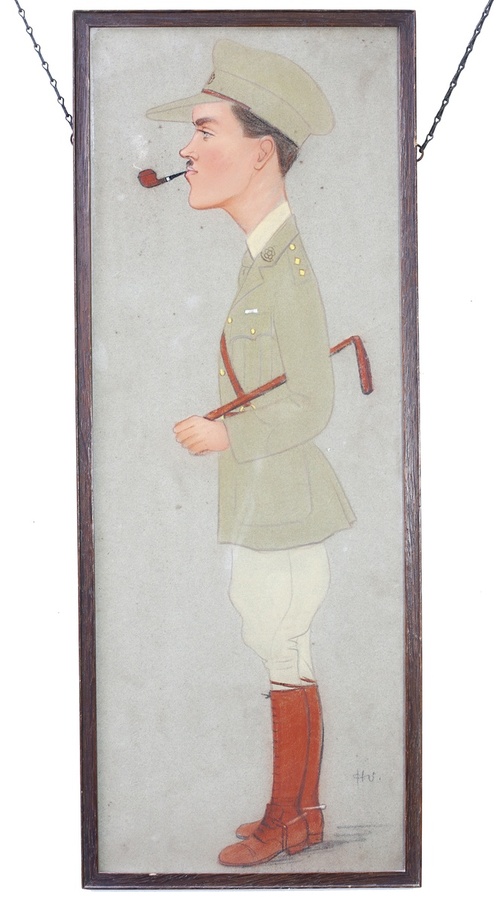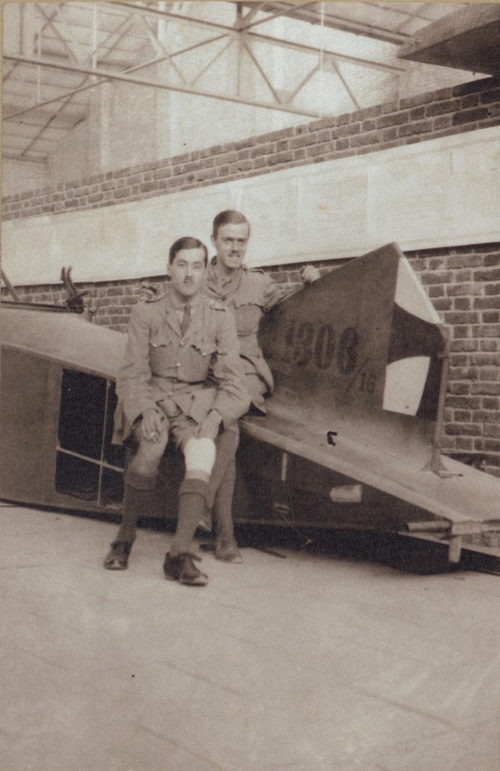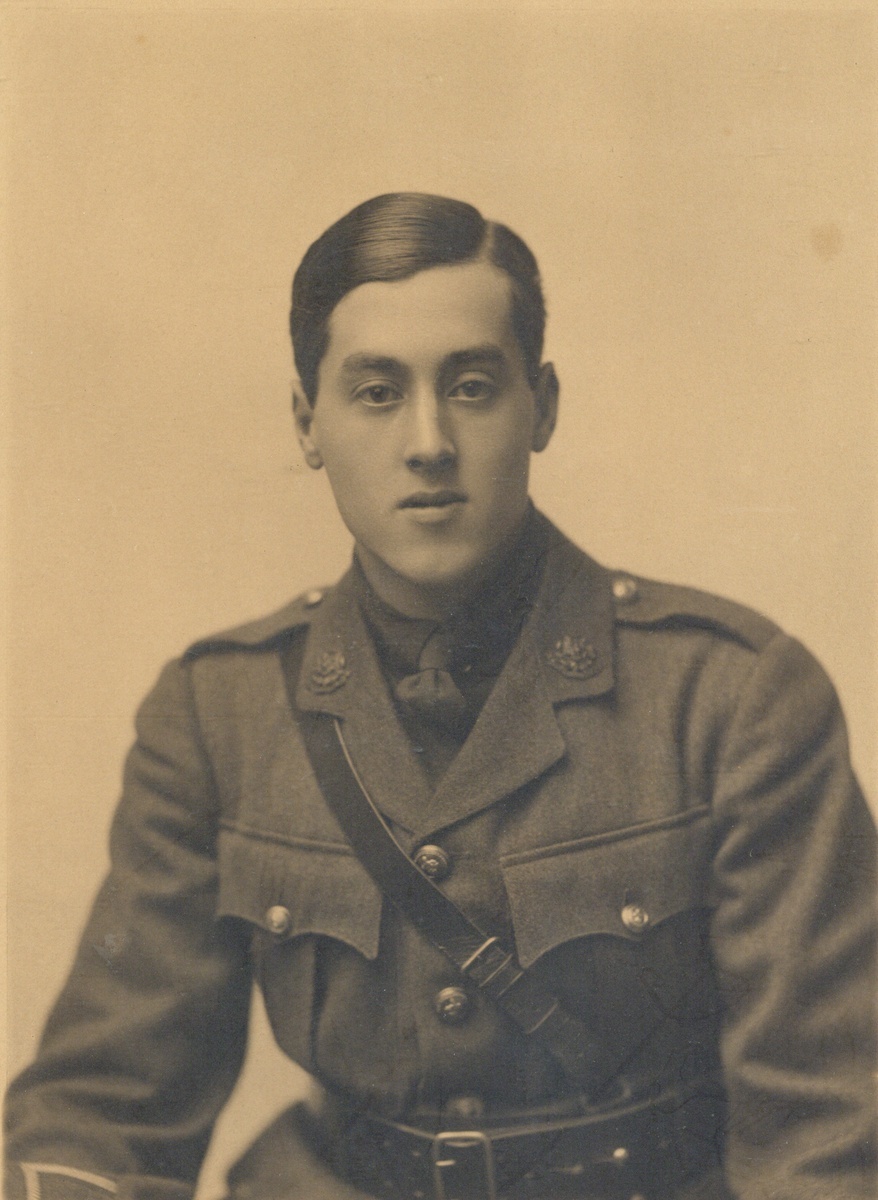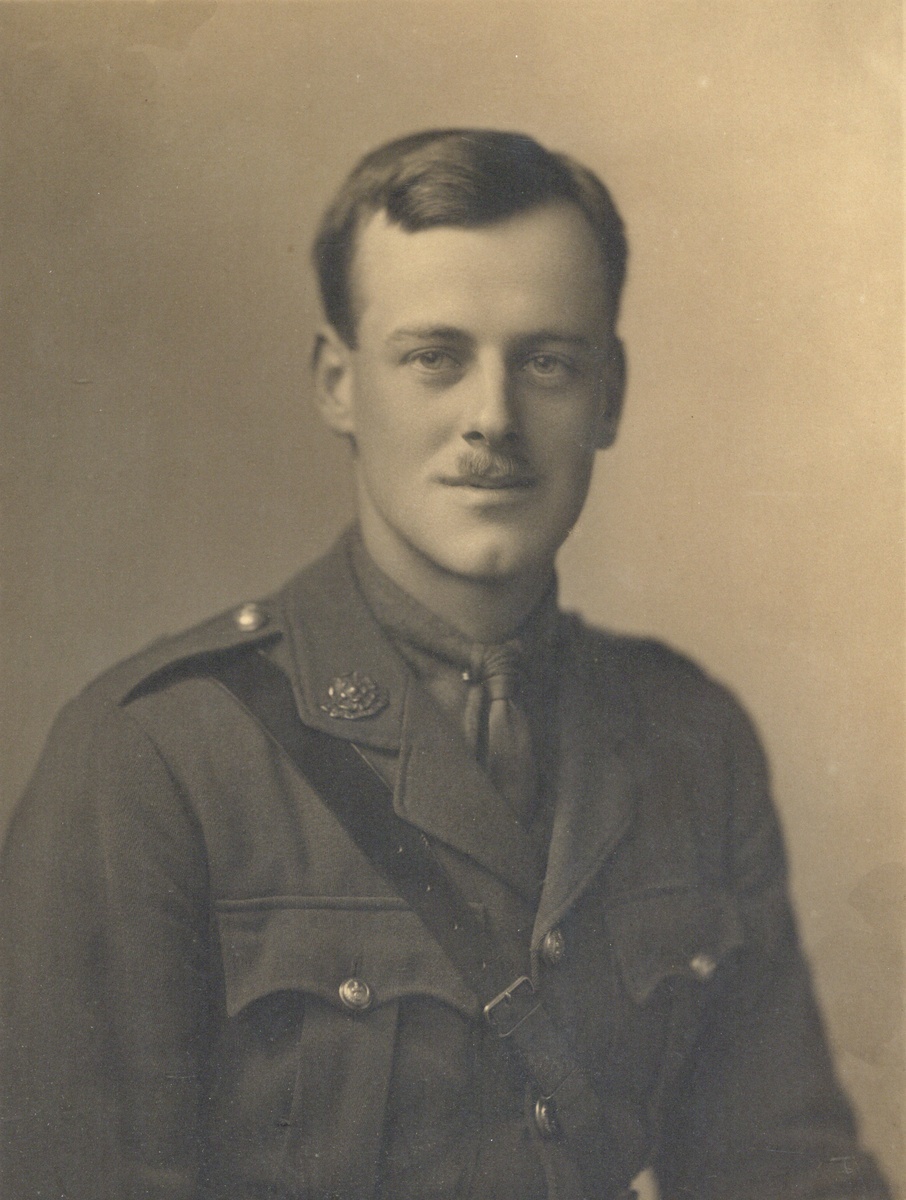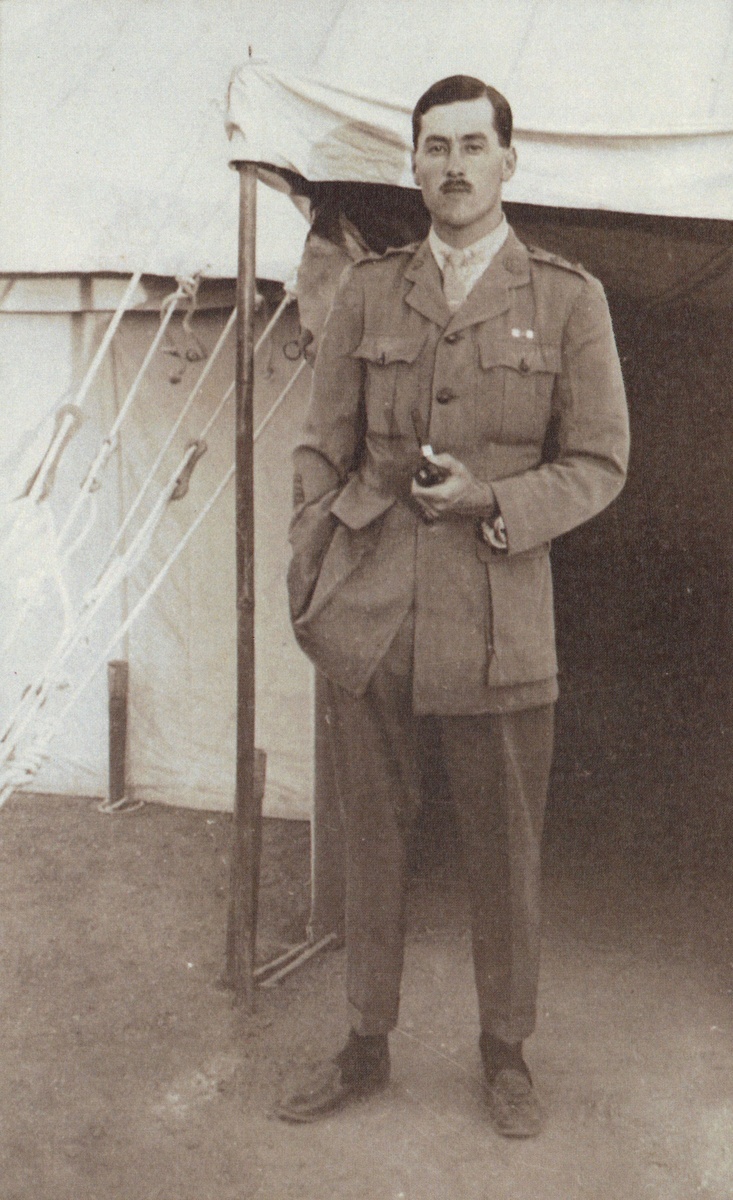Auction: 19003 - Orders, Decorations and Medals
Lot: 333
Sold by Order of a Direct Descendant
Family group:
The exceptional Great War M.C. groups of four awarded to the Watson brothers, both of whom trod near identical paths in education and military service, comrades in arms who served alongside one another in the 6th Battalion, East Lancashire Regiment
The younger brother, Captain T. P. Watson, 'a brilliant and gallant Adjutant' was killed in action leading his men across the Diala River at night under heavy enemy fire in March 1917, whilst the older brother, Lieutenant J. H. Watson survived the war
Military Cross, G.V.R. (Lieut. J. H. Watson. 6th. East Lanc: Regt. Mesopotamia. 17th.-18th. April 1916.), contemporarily engraved naming; 1914-15 Star (2.Lieut. J. H. Watson. E. Lan R.); British War and Victory Medal, latter with M.I.D. oakleaf (Lieut. J. H. Watson.), mounted as worn and contained within a Spink & Son Ltd. display case, nearly extremely fine
Military Cross, G.V.R. (Capt. T. P. Watson. 6th. East Lanc: Regt. Mesopotamia. 17th.-18th. April 1916.), contemporarily engraved naming; 1914-15 Star (Lieut: T. P. Watson. E. Lan: R.); British War and Victory Medal, latter with M.I.D. oakleaf (Capt. T. P. Watson.), the B.W.M. erased, otherwise nearly extremely fine (8)
M.C. London Gazette 22 December 1916.
John Harrison Watson was born on 23 May 1889 at Breaston, the elder son of William John Watson and Alice Jane Watson, of The Hollies, Breaston, Derbyshire. Educated at Stancliffe Hall and Malvern College, he joined the Royal Naval Air Service (Armoured Cars) on 17 October 1914 and served as Petty Officer Mechanic at Pembroke III until 30 January 1915, his service papers noting previous experience working in a local garage and 3 years' service with the Malvern Cadet Corps.
Subsequently nominated for a commission in the Army, Watson was appointed 2nd Lieutenant in the 6th Battalion, East Lancashire Regiment, it being noted that his brother was in the same Battalion. Interestingly, his references included the Clerk in Holy Orders at Breaston Rectory and Sydney Rhodes James, Headmaster of Malvern College from 1897-1914, records also noting his passing 'fit' for military service 'if he provides himself with an extra set of upper dentures'.
Seeing service in England from January-June 1915, Watson completed a Machine Gun Course at Hayling Island in March 1915 and was appointed Machine Gun Officer. He subsequently sailed from Avonmouth with the 6th Battalion on 16 June 1915, landing at Alexandria then moving to Mudros in preparation for the Gallipoli Campaign. The infantry landed on Cape Helles over 6-16 July to relieve 29th Division. Returning to Mudros at the end of the month, the 6th Battalion then landed at Anzac Cove between 3-5 August, and it is likely that Watson saw action at the Battles of Sari Bair, Russell's Top and Hill 60. Soon afterwards, following heavy losses, the 6th Battalion transferred from Anzac Cove to Suvla Bay, but were evacuated from the latter around 20 December 1915. After a week's rest and recuperation, necessitated by exhaustion and extreme weather conditions, they moved to the Helles bridgehead and witnessed the last Turkish attacks at Helles on 7 January 1916. Evacuated to Port Said on the night of 8/9 January, Watson would spend the rest of the month and part of February with the 6th Battalion holding forward posts in the Suez Canal defences.
On 12 February 1916, the Battalion departed Port Said for Mesopotamia, disembarking and transferring to Basrah a few days later. Joining the Tigris Corps on 27 March the unit was heavily engaged in the attempts to relieve the besieged garrison at Kut-al-Amara, followed by actions including the capture of the Hai Salient, the capture of Dahra Bend and the passage of the Diyala - in pursuit of the enemy towards Baghdad. Baghdad eventually fell on 11 March 1917, the Lancashire Fusiliers website noting:
'Thousands of Lancastrians fought their way to Baghdad in the Mesopotamian Campaign of World War I. From the three predecessor regiments of the Queen's Lancashire Regiment alone, no less than 1,239 of them lie there still.'
For the 6th Battalion, the attempts to relieve Kut had proved somewhat disastrous. Thrown into the muddled failure, the Battalion witnessed over 700 casualties in five days of fighting. Coming so soon after the debacle at Gallipoli, incompetent leadership was dismissed and General Maude, the much respected Divisional G.O.C., was made Commander-in-Chief. It was said that Maude 'brought sense to the shambles', by insisting on devoting the next seven and a half months to training, improving lines of communication and acclimatising to the extreme weather. Even so, with temperatures regularly exceeding 50 degrees, death and illness from heat-stroke were common and dysentery, malaria and other tropical diseases endemic. For Watson, the appointment of Maude and adoption of this new strategy came too late. Transferred to hospital sick on 3 May 1916, he was invalided to India. He was also mentioned In despatches (London Gazette 19 October 1916, refers), his service record additionally noting 'Kut relief Operations'.
Posted to Brigade Depot at Kuldana, followed by appointments at Campbellpore and Bangalore, Watson was promoted Lieutenant and awarded the Military Cross in December 1916. In December 1917, likely tired of service in India, Watson travelled to Egypt and joined the Royal Flying Corps Base Depot where he later began training with the Royal Air Force. Once again his health held him back and he was admitted to hospital in Cairo on 29 January 1918. Found 'unsuitable' for further training, Watson was posted back to India in November 1918, from where he embarked home on leave aboard H.M. Transport Ekma at Bombay on 18 January 1919.
In a handwritten letter to the Secretary at the War Office, dated 2 September 1919, Watson enquired whether he might be eligible for a Regular Commission in the Royal Army Service Corps Motor Transport after being demobilised from the East Lancashire Regiment at the end of May. He was unsuccessful. Watson instead moved with his wife to 'Sunninghill', Boundary Road, West Bridgford, a short distance from his mother's home. It was whilst living here that he had a number of run-ins with local magistrates involving the parking and driving of his motor-car, including a significant accident with a tandem that resulted in two people being 'thrown into the road' (The Derby Daily Telegraph 1 November 1938, refers). John Harrison Watson died on 6 February 1964; sold with copied MIC, officer service papers and private research.
M.C. London Gazette 22 December 1916.
Thomas Palmer Watson was born on 23 January 1891 at Breaston, the second son of William John Watson and Alice Jane Watson, of The Hollies, Breaston, Derbyshire. Educated at Stancliffe Hall and Malvern College from 1905 to 1910 - where he won an academic award for English verse, served as School Prefect, Head of House, Cadet Officer, and also represented the School in the Shooting VIII - he entered Sidney Sussex College, Cambridge, graduating B.A. (Hons) Classics in 1913. According to the University Annual for 1917, he was:
'Among the most popular men of his time, and was a good oar and tennis player'.
Soon thereafter, Watson became a teacher at Forres School, Northwood, Middlesex. According to the Malvern College memorial website, one can see how his skills and qualities lent themselves to a career in teaching and pastoral care:
'His intellectual powers were of high quality; in addition to a decided taste for Classical and English Literature he had a special aptitude for music and painting. He thus had a variety of interests which made him an excellent companion, and his closest friends were attracted to him partly by a charm of manner and partly by singleness of aim and sincerity of purpose. He gave help to many who needed help, and in his home circle he was the mainstay of the house. At Cambridge he won the esteem of tutors and men alike.'
On the outbreak of the Great War, Watson re-attested for the Cambridge Officer Training Corps - having been a member whilst previously an undergraduate - and was commissioned 2nd Lieutenant in September 1914. He was posted to the 6th Battalion, East Lancashire Regiment, which had been raised at Preston the month previously as part of Kitchener's First New Army. Watson and his men went into training at Lucknow Barracks, Tidworth, spending the winter of 1914 in billets at Winchester.
It is likely that Watson followed a very similar path to his brother, being posted to Gallipoli during June 1915. However, on 9 August 1915 he was severely injured on the fourth day of the Battle of Sari Bair when British forces made a last attempt to break the stalemate and seize control of the peninsula in preparation for the final push to Constantinople. According to his Casualty Form, Watson received a bullet wound to the right neck and another to the left thigh. Evacuated, it would not be until 4 December 1915 that he was deemed fit enough to return to the Battalion, being promoted Temporary Captain eleven days later.
In February 1916 he travelled with his Regiment to Basrah with his brother, and the pair possibly fought alongside one another. Admitted to hospital sick on 7 June 1916, he spent over two weeks suffering from dysentery before re-joining as Adjutant and Temporary Captain in Command of 'A' Company. For his service in Mesopotamia, Watson was mentioned in despatches (London Gazette 19 October 1916, refers) and later awarded the Military Cross, both in identical editions to his brother.
Sadly, on 7 March 1917 his luck ran out when he was 'killed in action at the gates of Baghdad' (Sidney College, Cambridge, Great War Members, refers). He was likely awarded his second 'Mention' at around this time (London Gazette 15 August 1917, refers). Besides the strong imagery offered by Sidney College, the War Diary gives more detail:
'At 3pm 38th Bde ordered to cross Diala River at night. K.O.'s on left, E.L.'s on right. Heavy fire destroyed 3 boats in which K.O. attempted to cross and owing to the improbability of getting back across under heavy fire, the attempt was given up that night and E.L. ordered not to endeavour to cross.' (X) Officer killed (Capt. & Adj. T. P. Watson, M.C.), X Officer wounded (Lieut. H. G. Wood)'.
According to a Memorandum held in his Officer Service Papers and dated 3 September 1917, Watson was initially buried in the vicinity of Diala Village, a map reference being offered. His body was later exhumed and reburied at Baghdad (North Gate) War Cemetery, his headstone bearing the inscription 'Gladly did I live and gladly die', as selected by his mother. A further poignant tribute was afforded by Colonel Davy in The Malvernian, C.O. of the 6th Battalion at Diala:
'He was beloved by every officer and man who came into contact with him; he devoted the whole of his life since he had been Adjutant to the welfare of every officer and man in the regiment. His rare unselfishness, devotion to duty, and his charming character made the handling of men with him an easy thing. His fine brain made all work easy to him, and his devotion to the Regiment seemed to make him tireless, and his great spirit overcame physical fatigue'
Sold with copied MIC, officer service papers and private research.
Offered together with an outstanding original archive of items appertaining to both brothers:
(i)
Two portrait photographs of J. H. Watson & T. P. Watson, in officer uniform, contemporarily framed, approx. 25 x 31 cm.
(ii)
An appealing pastel caricature full-length portrait of T. P. Watson, in officer uniform, smoking a pipe, M.C. riband displayed, contemporarily framed, approx. 24.5x 62cm, signed 'HV' lower right-hand corner.
(iii)
Two large soft-leather photograph albums compiled by J. H. Watson whilst stationed in India and later, in Egypt with the Royal Air Force. The first commences with an image of Bombay Harbour from the hospital ship Assaye, dated 23.5.16, and goes on to describe life in Naini Tal, including travels on the road to Murree and Kuldana, August 1916, local inhabitants and places of interest. The second commences at Choi, December 1916, before describing his 'Farewell to India' and Christmas Day 1917 aboard H.M.T. Omrah, including 'Hun and Turk Prisoners' celebrating. The album contains a number of portrait photographs, images of the Pyramids and some outstanding pictures of crashed aircraft at Amria in July 1918, and the 'end of D.H.6. No. 4. At Shalufa, October 1918'. Approximately 115 photographs, the majority neatly annotated with place and date.
(iv)
Original M.I.D. Certificate to T/2nd Lt. J. H. Watson, East Lancashire Regiment, dated 24 August 1916, in contemporary frame; M.I.D. Certificate to Temp. Capt. T. P. Watson, M.C. (killed in action), East Lancashire Regiment, dated 10 April 1917, in contemporary frame.
(v)
Nottingham & District Motor Cycling Club, small 9ct gold medal, engraved to obverse 'Nottm. & Dist. M.C.C.' and reverse 'Presented by J. E. Littlewood 1 Mile H'cp. Touring Singles. Won by J. H. Watson. July 30th 1910', in fitted case of issue by John J. Perry, Nottingham; Dunlop Jubilee International Motor Cycle Races, Donington, August 27 1938, silver medallion, in fitted case of issue by W. J. Carroll, London.
(vi)
Cases of issue for Military Cross (2), and contemporary riband bars with M.I.D. oakleaves (2).
(vii)
Miniature Dress Medal: a mounted group of four comprising Military Cross, G.V.R.; 1914-15 Star; British War and Victory Medal with M.I.D. oakleaf, unnamed as issued, contemporarily mounted on wearing pin, in Spink and Son Ltd. case; a further single Military Cross, G.V.R., with Spink & Son Ltd. wearing pin.
(viii)
A collection of contemporary shoulder titles and badges to the East Lancashire Regiment (12), in brass and bronze, officer 'pips' (13), regimental cufflinks (4), and a large number of military buttons, approximately 40.
(ix)
An 1897 pattern Infantry Officer's sword, G.V.R., by S. & J. Kitchin, Sheffield, of standard form, straight-bladed, three-quarter basket hilted sword, marked 'PROVED', unnumbered, engraved 'J. H. Watson' to inner basket, leather grip and scabbard, the knot lacking, light traces of rust here and there, otherwise very fine.
Subject to 20% VAT on Buyer’s Premium. For more information please view Terms and Conditions for Buyers.
Sold for
£4,000
Starting price
£1800



